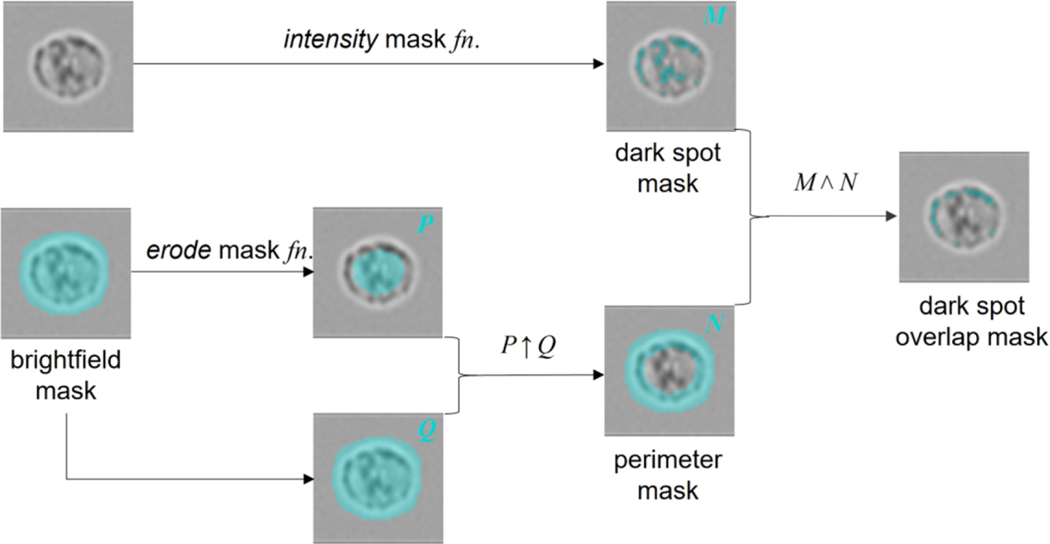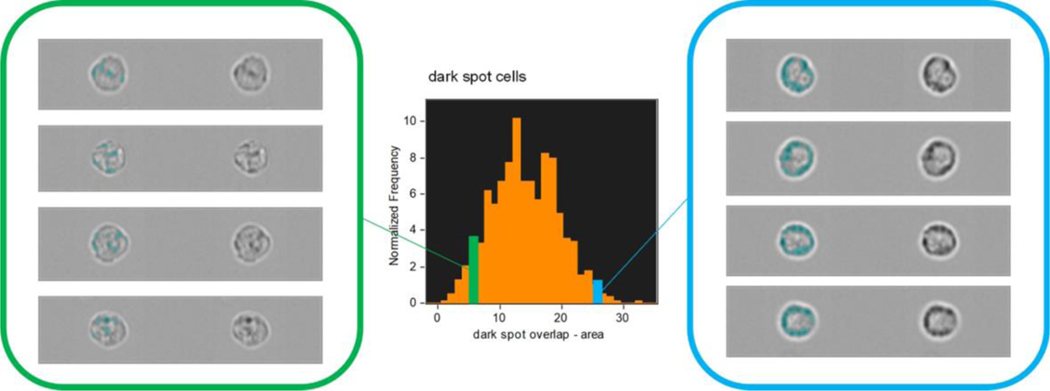Figure 4:
(a) A schematic overview highlighting the major methodological steps required to measure the spatio-temporal flux of calcium in immune cells in response to various stimuli. (b) Example data whereby Jurkat T cells were labeled with the relevant vital dyes and acquired on an ImageStream X (ISx), initially for a period of 60 seconds to establish a resting baseline after which samples were unloaded and either Thapsigargin (red line) or anti-CD3 (blue line) was added at optimized concentrations. Samples were then re-loaded on to the ISx and acquired for a further time period. As a positive control for calcium mobilization, samples were unloaded for one final time and the ionophore Ionomycin was added prior to reloading the sample and a further period of data acquisition. The upper panel shows the intensity of MagFluo4 within the area of the cell image defined as the Endoplasmic reticulum (ER) as a percentage of the initial value at baseline. The lower panel shows example multi-spectral images at each phase of measurement.


